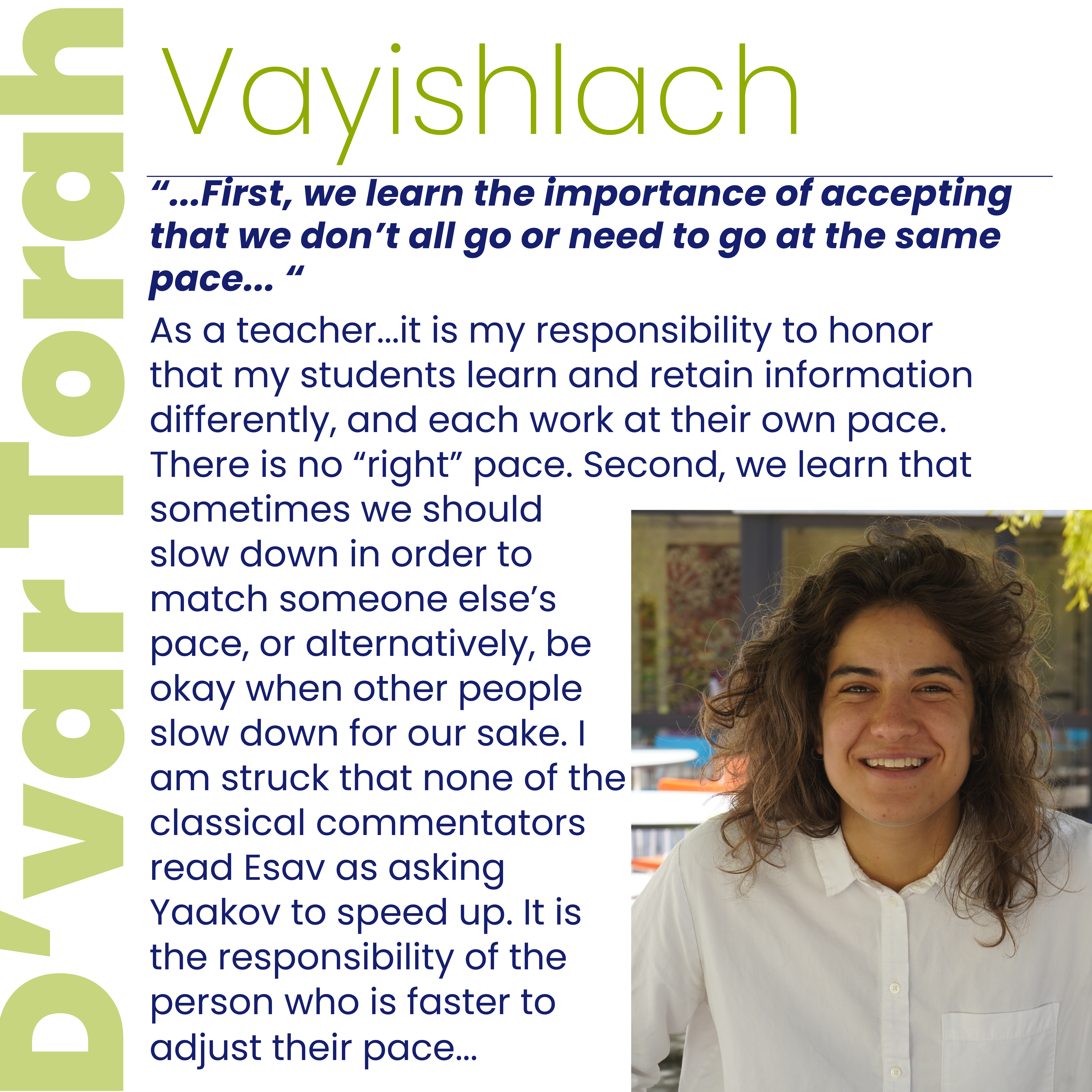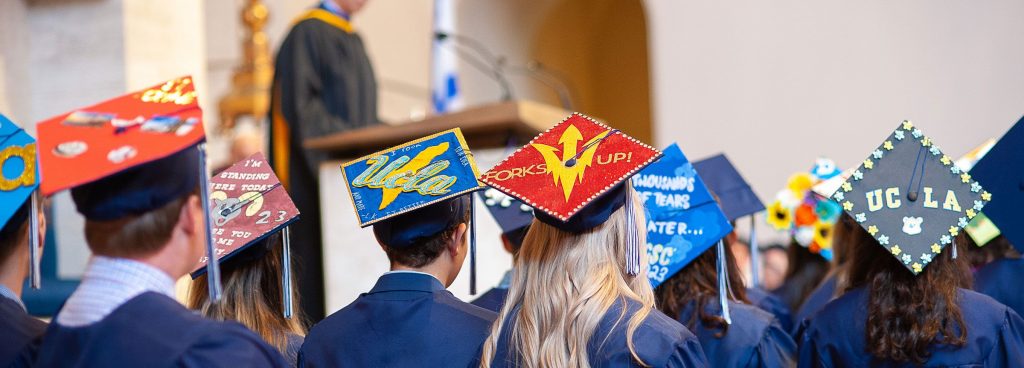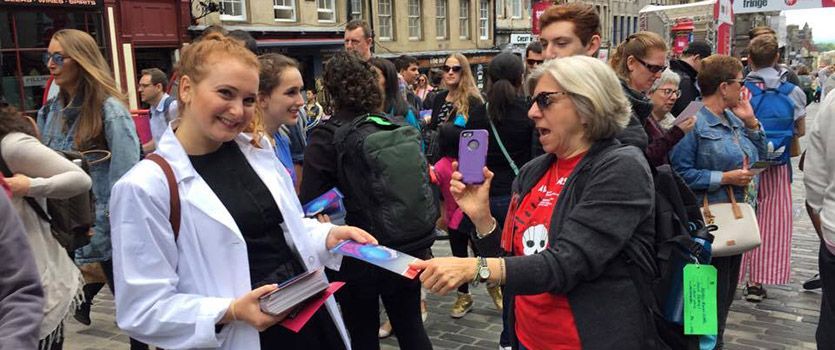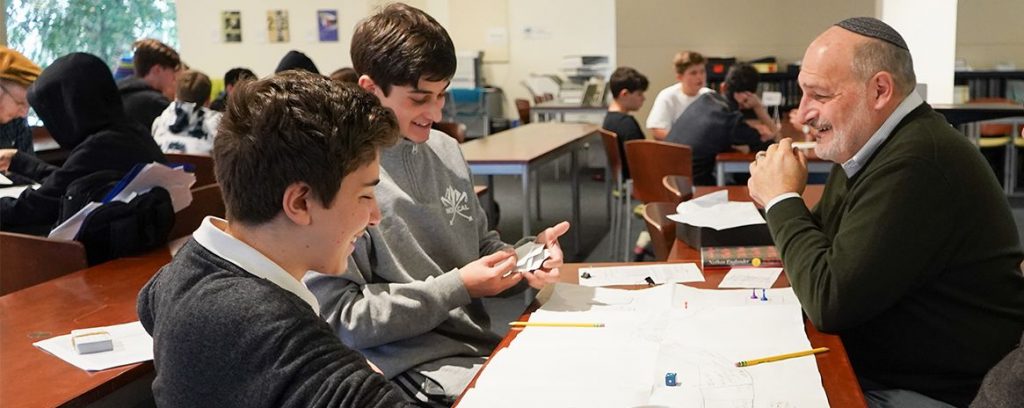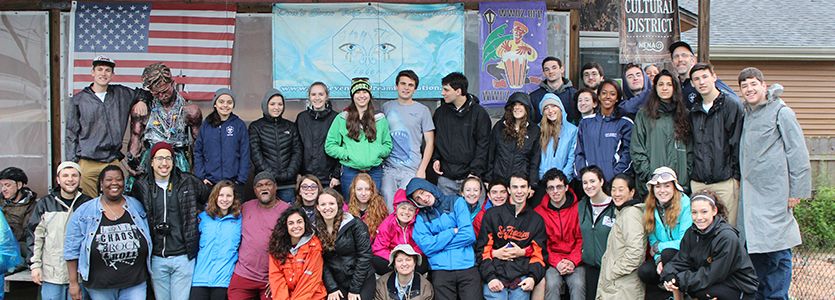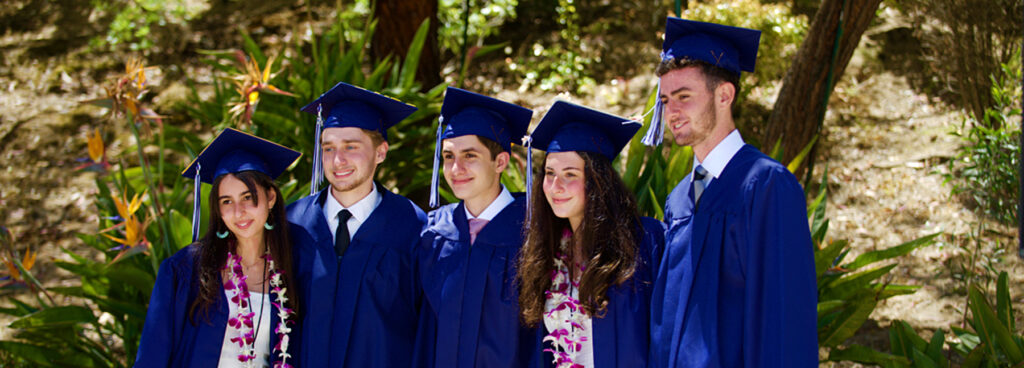Adi Alouf, Director of Jewish and Student Life
This week’s Torah portion, Vayishlach, features a family reunion between the brothers Yaakov and Esav. As readers, we are tuned into Yaakov’s anticipatory feelings and gestures leading up to their meeting. When the brothers last saw each other, Yaakov had just deceived his father Isaac into bestowing upon him the blessing of the firstborn and escaped to Charan to avoid Esav’s wrath. Eventually, Yaakov and Esav meet, embrace, weep, and kiss. Following this emotional moment of brotherly reconnection, Esav says to Yaakov, “נִסְעָ֣ה וְנֵלֵ֑כָה וְאֵלְכָ֖ה לְנֶגְדֶּֽךָ׃,” or, “Let us journey and walk, and I will walk alongside you.”
Radak, a French medieval commentator, understands לְנֶגְדֶּֽךָ, “alongside you,” as Esav offering to go at a faster pace, but remain close by. Radak understands the plural נִסְעָ֣ה, “let us go,” as a suggestion that the brothers walk side by side – together at the same pace. Rashi specifies that Esav is offering to intentionally slow down and take a longer time on his journey in order to match his brother’s pace and walk with him. So, according to Radak, Esav actually presents two ideas for journeying: We can either travel together, or I will keep my distance and proceed parallel to you. The 19th century German rabbi Yaakov Tzvi Mecklenburg interprets Esav as offering Ya’akov to journey with him and specifically, exchange stories.
Esav is being thoughtful, offering to adjust his own pace in order to walk with his brother. Esav’s invitation teaches us how to be gracious and intentional when trying to reconcile different paces.
First, we learn the importance of accepting that we don’t all go or need to go at the same pace. As a teacher, for example, it is my responsibility to honor that my students learn and retain information differently, and each work at their own pace. There is no “right” pace.
Second, we learn that sometimes we should slow down in order to match someone else’s pace, or alternatively, be okay when other people slow down for our sake. I am struck that none of the classical commentators read Esav as asking Yaakov to speed up. It is the responsibility of the person who is faster to adjust their pace.
Finally, we learn that there are different ways of walking with someone. There are different ways of being supportive and accompanying someone through the harder journeys in life. We can slow down to be alongside someone, engage in conversation and share stories, or give space but remain intentionally close by.
Interestingly, Yaakov and Esav don’t actually journey together. Yaakov explains that his flocks won’t be able to handle another day. The scene ends with the brothers parting ways – Esav to Seir, and Yaakov to Sukkot.
For Yaakov, it was simpler to go separate ways. Maybe he wasn’t ready for this brotherly intimacy. Or, maybe he didn’t want to be a burden at his slower pace.
But what if Yaakov took the opportunity to walk with Esav? What stories would they have exchanged along their journey?
As we move into Shabbat, I encourage you to journey with someone – if you are physically able, take a walk with a friend or family member and catch up. There is something quite powerful about simply walking and exchanging stories – in meeting a friend and walking Golden Gate Park or Mount Tam or Lake Merritt as a means of getting to know them and sharing parts of yourself in more depth. If you aren’t able to take a walk, call or Zoom with someone and exchange stories with them.
I also charge us to pursue a more metaphorical journeying with others. Even though it might require vulnerability and effort, it is important that we appreciate the varying paces of the people in our lives, and sometimes calibrate our pace with others’. When we push ourselves to meet people where they are, or when we ourselves are open to other people slowing down for our sake, we are able to journey alongside others and cultivate connection and friendship.


